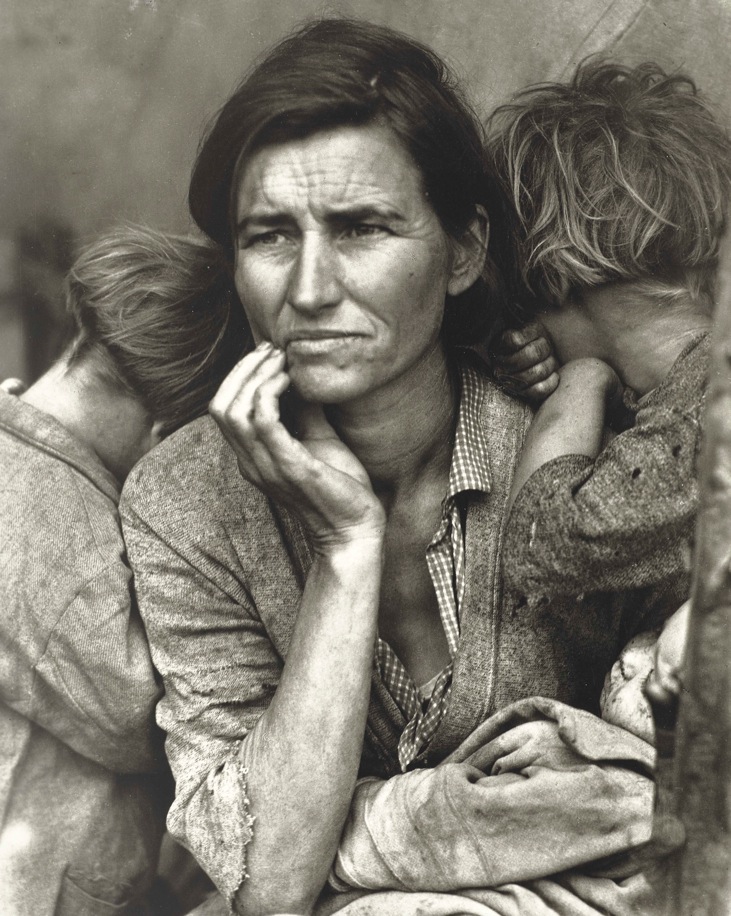Today’s post comes from Diane Butler, Andrew W. Mellon Coordinator of Academic Programs at the Art Center.

When Associate Professor of Sociology Light Carruyo opened her presentation at this week’s Artful Dodger, she confessed, “I know I’m supposed to say that I’m happy to be here, but because I have no background in art, I’m afraid that I’m a bit nervous.” The subject of her talk was the iconic photograph “Migrant Mother, Nipomo, California” taken by Dorothea Lange in 1936 while working for the Farm Security Administration (FSA). Rather than launch into her subject, Professor Carruyo passed around one, then another photograph – both unknown to the audience. These amateur photographs (we later learned that Carruyo herself had taken them) allowed viewers to consider how we bring our own experiences to bear when viewing works of art.
Seeing yourself in a photograph was exactly what the FSA had intended when it circulated Lange’s photograph. The subject of the work, a woman confronted with difficult times, choices, and responsibilities, touched millions of Americans living through the Great Depression. Although unnamed in the image, the woman in the photograph was much later identified as Florence Owens Thomson, a 32-year-old Native American migrant woman working as a pea picker. In 1960 Lange recounted the circumstances behind the photograph:
I saw and approached the hungry and desperate mother, as if drawn by a magnet. I do not remember how I explained my presence or my camera to her, but I do remember she asked me no questions. I made five exposures, working closer and closer from the same direction. I did not ask her name or her history. She told me her age, that she was thirty-two. She said that they had been living on frozen vegetables from the surrounding fields, and birds that the children killed. She had just sold the tires from her car to buy food. There she sat in that lean-to tent with her children huddled around her, and seemed to know that my pictures might help her, and so she helped me. There was a sort of equality about it.
As a sociologist, Professor Light Carruyo understood the importance of social class and contemporary receptions of the photograph. As an Artful Dodger speaker, she treated the occasion as an opportunity to engage with others – to solicit their observations and to reflect on the transformative power of a single photograph.




